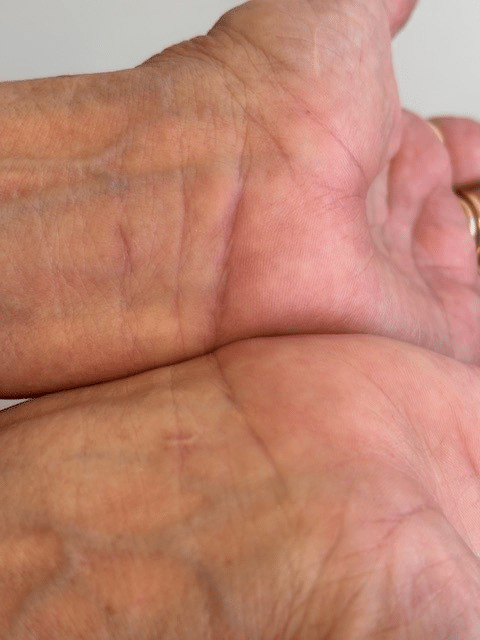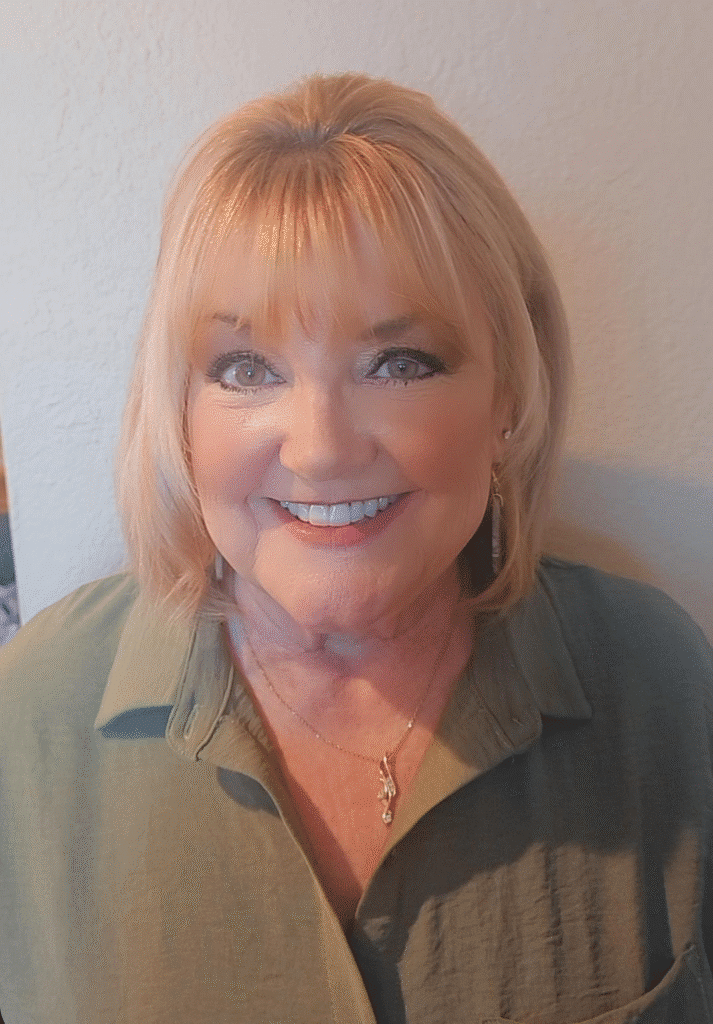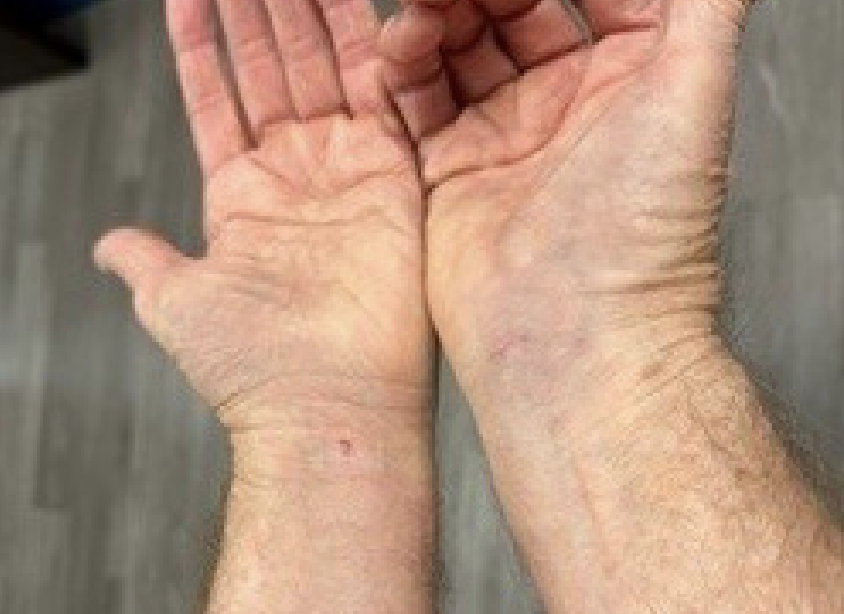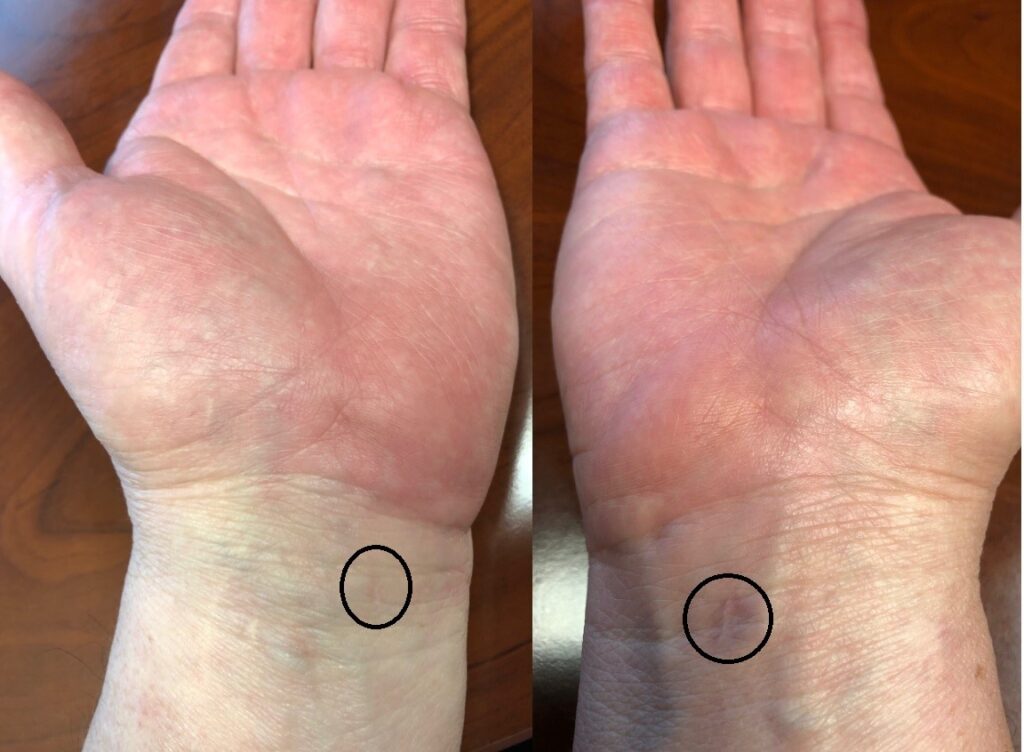Kelly, a 70-year-old court reporter and business owner, had been battling carpal tunnel syndrome for five years. What started as mild numbness in one finger gradually worsened, spreading to her other fingers and causing wrist, elbow, and shoulder discomfort.
As a court reporter since 1976, Kelly’s career demanded constant keyboard use, and her symptoms—especially at night—made sleep nearly impossible. “It was worse at night,” she recalls, noting how the lack of rest impacted her daily life and positivity.

Running her court reporting firm, which she’s managed since 1985, became increasingly challenging as she resorted to icing, heating, and splinting to manage the pain. Her primary care physician diagnosed her with carpal tunnel syndrome and provided a splint, which offered slight relief for discomfort but did nothing for the numbness.
Traditional open carpal tunnel surgery wasn’t an option for Kelly. She knew it would involve general anesthesia, sutures, and a lengthy recovery—time she couldn’t afford with her busy firm and skeletal staff. “I couldn’t afford to take the time off,” she explains, especially after hearing mixed reviews from fellow court reporters about open surgery. She was also concerned about the invasiveness and potential complications. Kelly explored other treatment options, but her insurance provider would only cover traditional open carpal tunnel surgery.
“I knew that I didn’t have time to have the open surgery and I just sort of put it out of my mind.”
Everything changed when a friend shared an email about Dr. Orrin Franko’s seminar on a minimally invasive technique, carpal tunnel release with UltraGuideCTR™ and real-time ultrasound guidance (CTR-US). Initially hesitant, Kelly attended the seminar in San Leandro and was immediately impressed by the potential benefits of this minimally invasive approach, local anesthesia, and quick recovery.
The Value of Getting Back to Life
After confirming her diagnosis with ultrasound, Kelly scheduled the procedure with Dr. Franko. Kelly was worried the price for this procedure would be high and knew that her insurance provider did not cover this treatment option, but covered traditional open. She discussed CTR-US with Dr. Franko, the potential risks and benefits and decided to move forward with the treatment. The cost, which she likened to a dental procedure, felt justifiable for the potential relief. In August 2024, she had her right wrist treated, followed by her left a few months later.
“I paid out of pocket, but the cost was reasonable compared to the potential expenses and recovery time of traditional surgery.”
The procedure was quick—with no pain, just slight pressure. The collaborative discussion between Dr. Franko and the rest of his team made her feel cared for. “I was just thrilled to be there and think I’m going to feel better,” she says.
Kelly questioned why anyone would want to undergo another treatment option when CTR-US is available. To avoid the cost of general anesthesia, sutures, an operating room, and the extended recovery from other techniques, “It just doesn’t make any sense to me.” Kelly expressed how the difference in cost is made up for the quick procedure time and the potential benefits of CTR-US, “you can drive yourself to and home from the procedure and you can be back to doing whatever you need to do the next day. It’s just so phenomenal.” Despite her insurance provider not covering this treatment option, Kelly felt the value of these benefits was worth the out of pocket cost.

A New Lease on Life
Kelly experienced immediate relief. She returned to work remotely the next day and was back in the office shortly after, with no restrictions on daily activities, including carrying her “bag lady” essentials.
“I woke up the next day and realized I’d slept longer than I had in a very long time. I had zero pain, zero numbness—it was life-changing.”
Now, Kelly is back to her full routine, managing her firm, and even planning to pass her business to her daughter, a fellow court reporter. She believes the cost was reasonable compared to the potential expenses and recovery time of traditional surgery. Kelly now passionately advocates for carpal tunnel release using UltraGuideCTR and real-time ultrasound guidance, encouraging others to explore this option.
“Do you want to change your life? Do you want to experience relief in an instant with no recovery? It’s so uplifting,” she urges. She hopes that more providers, including her private insurance provider, will adopt the procedure, and make this treatment option easily accessible to even more patients around the country.
Dr. Orrin Franko is one of many physicians offering this technique to his carpal tunnel syndrome patients. To see other doctors around the United States, check out the physician locator.

MP04200rA

